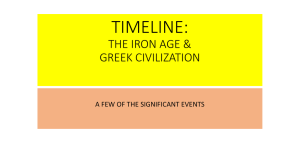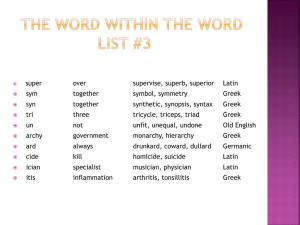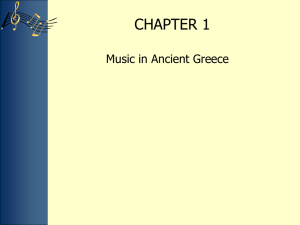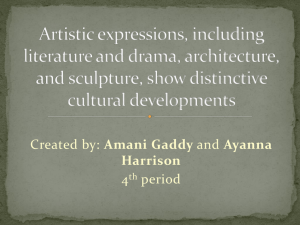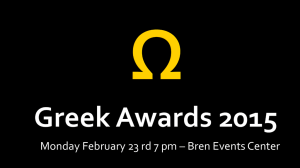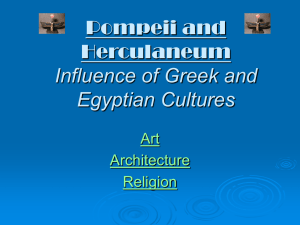Egyptian and Greek influence
advertisement
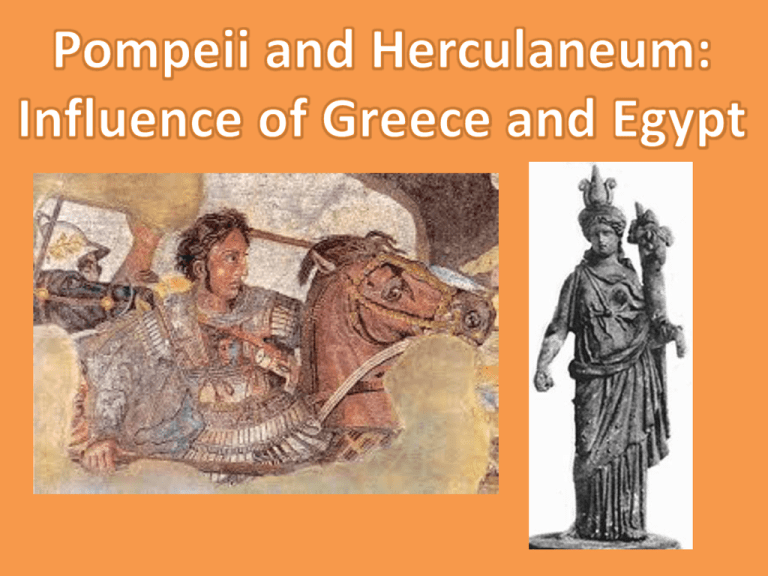
The Greek influence in both towns is undeniable. In fact Greek influence in the area can be traced back to the 5th century BCE when Greek colonists used the area as a trading centre and port. Some interpretations of the names of both towns trace their origins back to this period of Greek influence. Herculaneum has some connection to the Greek god (?) Herkules. Pompeii may have been derived from the Greek word “pompa” meaning religious procession. Towns retained a strong Greek influence in a number of areas despite being under Roman control for quite some time (Herculaeneum from 90 BCE ish and Herculaeneum from 370 BCE) One of the most obvious examples of the Greek influence in Pompeii and Herculaneum is in Art. Frescoes, Mosaics and Sculpture are all Greek Art forms appropriated and appreciated by the Roman world. The influence of Hellenistic (Greek) forms of art are an example of the enduring fashion of Greek style in Roman towns. Right: Plato Mosaic from Villa of T. Siminius Stephanus Middle: Saytr Mosaic from Naples Museum (? Found at Pompeii) Low: Alexander Mosaic House of the Faun, Pompeii Above: Mosaics from the House of Neptune and Amphirite, Herculaneum Frescoes from Cult Room at Villa of Mysteries, outside Pompeii Pompeii: Statues found near the Nucerian Gate. Also don’t forget the statue of Eumachia found in the Forum and the temple statues of Greek Gods in the Forum Herculaneum: Ststues of Vitellius and Claudius from Basillica. Also don’t forget the frescoes of Greek myths found in the Basillica too. Basillica in Pompeii Shows the influence of the Greek architectural orders and the influence of Greece ideals of the arrangement of public space. House of Telephus in Herculaeneum Shows the extent of the influence of Greece on private space. Example of orders (see the above peristyle garden and collonade) and architectural features (courtyards, gardens and rooms) Artefacts and Egyptian Reliefs from the House of the Faun



